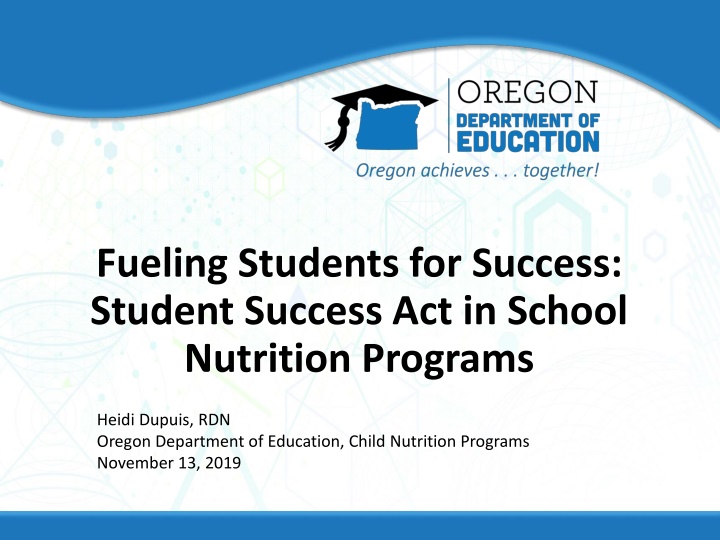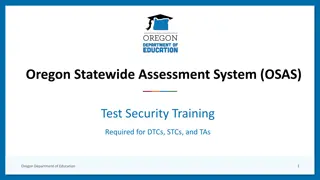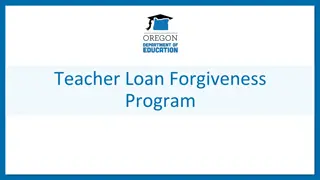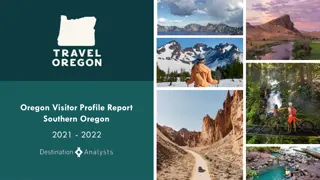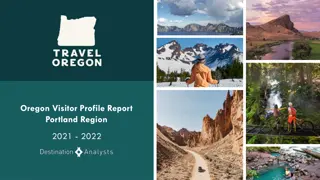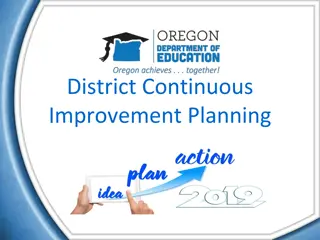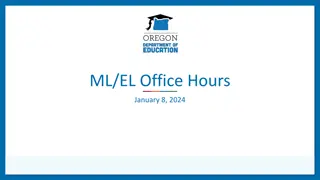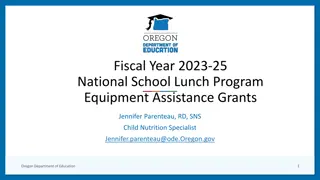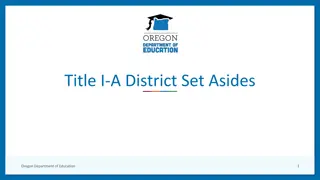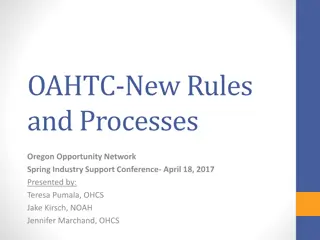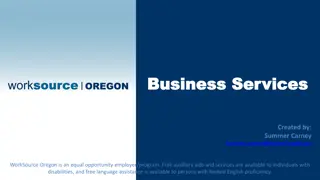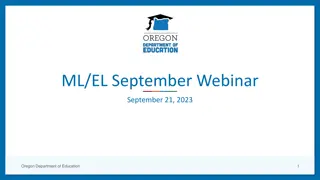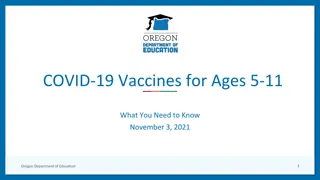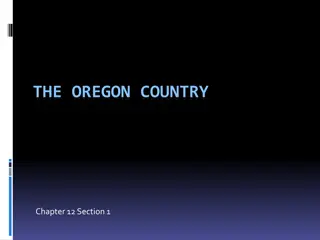Fueling Students for Success: Oregon Department of Education Initiatives
Oregon Department of Education works towards education equity, providing nutrition programs for student success. Initiatives include free meals for students, equipment grants, and a focus on student well-being and academic development.
Download Presentation

Please find below an Image/Link to download the presentation.
The content on the website is provided AS IS for your information and personal use only. It may not be sold, licensed, or shared on other websites without obtaining consent from the author.If you encounter any issues during the download, it is possible that the publisher has removed the file from their server.
You are allowed to download the files provided on this website for personal or commercial use, subject to the condition that they are used lawfully. All files are the property of their respective owners.
The content on the website is provided AS IS for your information and personal use only. It may not be sold, licensed, or shared on other websites without obtaining consent from the author.
E N D
Presentation Transcript
Fueling Students for Success: Student Success Act in School Nutrition Programs Heidi Dupuis, RDN Oregon Department of Education, Child Nutrition Programs November 13, 2019
Student Success Act Supporting students physical, social, emotional and academic development by Offering breakfast after the bell Meals at no charge to most students
Funding SSA Provisions funded through Business Revenue Tax Hunger Free School Account is dedicated to the Fueling Students for Success provisions For 2020- 2021: $41.6 million appropriated $40 million for access to meals at no charge 1.3 million for Breakfast after the Bell Equipment Grants .3 million for staffing
Oregon Department of Education Our Why Equity and Excellence for Every Learner The Oregon Department of Education works in partnership with school districts, education service districts and community partners; Together, we serve over 580,000 K-12 students; We believe every student should have access to a high-quality, well- rounded learning experience; We work to achieve the Governor s vision that every student in Oregon graduates with a plan for their future. 4
Oregon Department of Education Education Equity Stance Education equity is the equitable implementation of policy, practices, procedures, and legislation that translates into resource allocation, education rigor, and opportunities for historically and currently marginalized youth, students, and families including civil rights protected classes. This means the restructuring and dismantling of systems and institutions that create the dichotomy of beneficiaries and the oppressed and marginalized. 5
Oregon Data: 2018-19 Daily Lunch 266,963 out of 580,000 (46 %) School Meal Participation Daily Breakfast 134,603 out of 580,000 (23%) 60% 50% 40% 30% 20% 10% 0% 2008 2009 2010 2011 2012 2013 2014 2015 2016 2017 2018 Breakfast Lunch
Breakfast After the Bell Applies to schools with 70% of students eligible for free and reduced price meals Breakfast served after the school day starts All students have access regardless of grade or schedule Up to $5,000 for equipment to support change Exempt: 70% of Free and Reduced price students eating Affected: Estimated 465 schools and 178,000 students
Breakfast After the Bell Approaches Grab and Go Served in Cafeteria, eaten in Classroom Served and eaten in Cafeteria Hallway cart service, eaten in Classroom Mid-morning break in schedule Before Bell and liberal access after the bell
Community Eligibility Provision At least 40% of students receive SNAP, TANF, FDPIR, Foster, Migrant, homeless, runaway services (ISP) Can group high and low ISP schools to reach 40% Breakfast and lunch at no charge to all students ISP x 1.6 = Free claiming rate 4 year cycle Potential to double
Community Eligibility Provision Incentive
Things to Weigh Benefits Reduced family burden Reduced school burden Flexible meal service Meals at no charge to all Reduced Program stigma Considerations Title 1 School Allocations Report Card reporting Access to community needs-based programs
Title 1 a Funds to District determined by US census Funds to Schools distributed by poverty measures Census data Free and Reduced Lunch TANF Medicaid Composite of these measures
Expanded Income Guidelines Federal Free 130% of poverty and below Less than $ 33,475 Oregon 186 300% of poverty $47,639 $77,250 Reduced Price 131 185% of poverty $ 33,476 $ 47,638 Paid Above 185% of poverty
Poverty Measures Poverty Threshold US Census Bureau Counting populations Starting Point for Guidelines Varies by family size, children and elderly One geography Poverty Guidelines US Health and Human Services Program Eligibility Varies by family size Three geographies Frequently Asked Questions related to the Poverty Guidelines and Poverty. Office of the Assistant Secretary for Planning and Evaluation, US Department of Health and Human Services Web Site. https://aspe.hhs.gov/frequently-asked-questions-related- poverty-guidelines-and-poverty#differences
US Census Poverty Threshold Poverty Thresholds. United States Census Bureau Web Site. https://www.census.gov/data/tables/time-series/demo/income- poverty/historical-poverty-thresholds.html
HHS Poverty Guidelines Poverty Guidelines 2019. US Department of Health &Human Services web site https://aspe.hhs.gov/2017- poverty-guidelines#guidelines
Local Impact Benefits Considerations Increased meal participation Less unpaid meal charges Meals at no charge continue when economy changes More storage space for food and supplies More staff for prep and service Additional meal service time
Legislative Fixes Eligible Student Removing reference to USDA Income Guidelines so CEP schools included in Breakfast after the Bell. Paid price Basis under Expand Income Removing Paid meal price as a basis for meal reimbursement Increase reimbursement predictability
Contact Information Heidi Dupuis, RDN Oregon Department of Education Child Nutrition Programs 503.947.5893 heidi.dupuis@state.or.us Fueling Students for Success Web site Ask your questions through the Collaboration Tool
